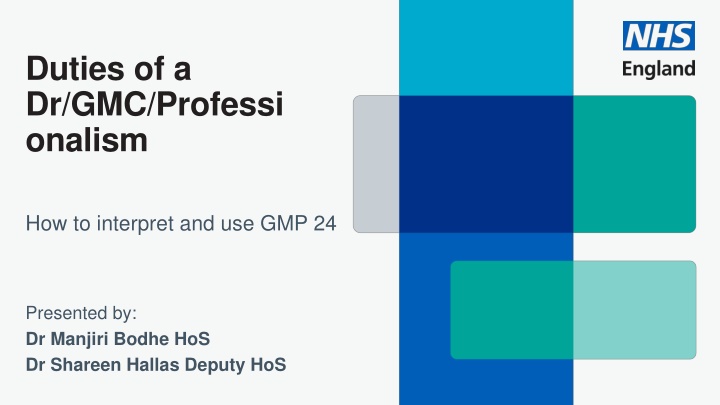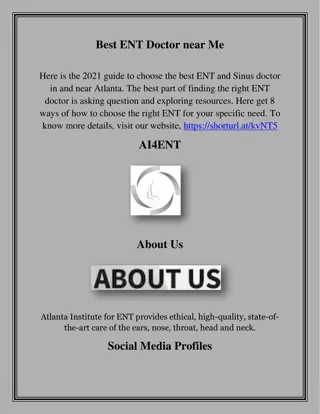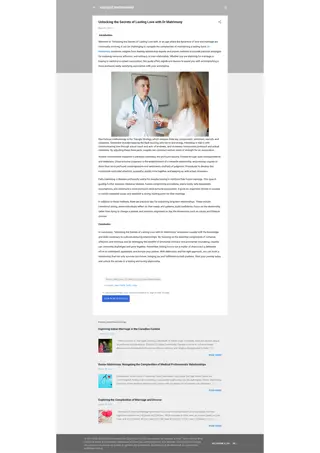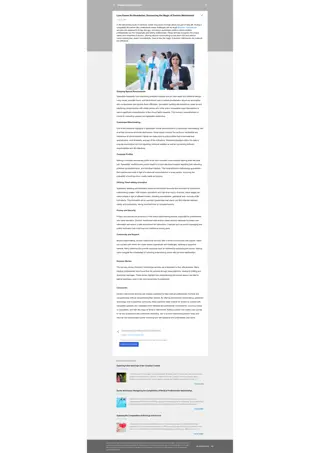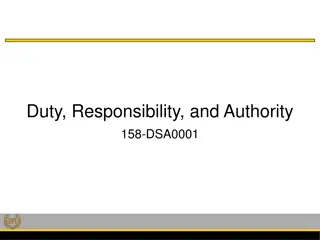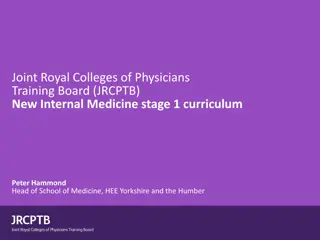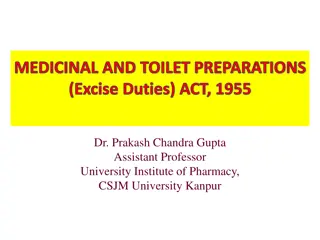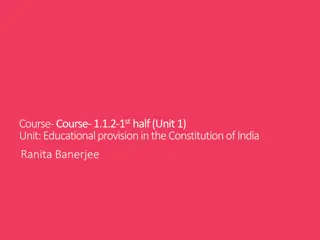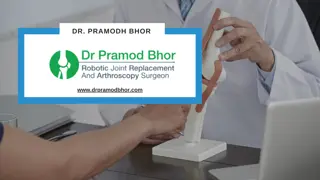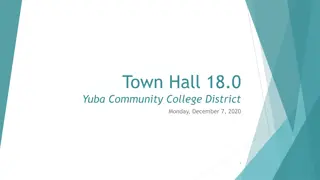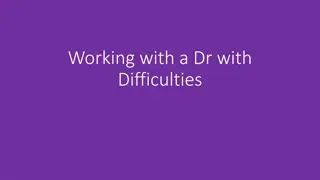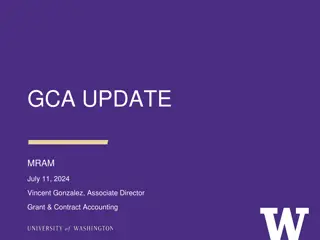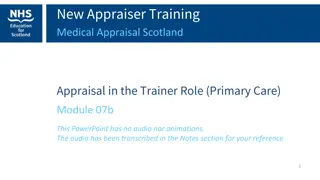New Duties of a Doctor: GMC Updates 2024
Changes in professional standards by GMC emphasize respectful, fair workplaces. Addressing areas like delegation, conflicts of interest, and social media use, the focus is on maintaining boundaries and professional conduct, enhancing public trust. GP trainees also have responsibilities in their personal social media usage. The impact of social media behavior on public perception is crucial, requiring discretion and ethical decision-making to uphold the integrity of the medical profession.
Uploaded on Mar 06, 2025 | 1 Views
Download Presentation

Please find below an Image/Link to download the presentation.
The content on the website is provided AS IS for your information and personal use only. It may not be sold, licensed, or shared on other websites without obtaining consent from the author.If you encounter any issues during the download, it is possible that the publisher has removed the file from their server.
You are allowed to download the files provided on this website for personal or commercial use, subject to the condition that they are used lawfully. All files are the property of their respective owners.
The content on the website is provided AS IS for your information and personal use only. It may not be sold, licensed, or shared on other websites without obtaining consent from the author.
E N D
Presentation Transcript
Duties of a Dr/GMC/Professi onalism How to interpret and use GMP 24 Presented by: Dr Manjiri Bodhe HoS Dr Shareen Hallas Deputy HoS
New Duties of a doctor/Good medical practice Good medical practice 2024 - GMC (gmc-uk.org) Some changes to this Sexual misconduct Social media guidance The updated professional standards have a stronger focus on behaviours and values which create respectful, fair and supportive workplaces. 2
New Duties of a doctor/Good medical practice Good medical practice 2024 - GMC (gmc-uk.org), some specific areas updated Delegation and referral Ending your professional relationship with a patient Identifying and managing conflicts of interest Intimate examinations and chaperones Maintaining personal and professional boundaries As the themes and issues are strongly related, we ve combined Maintaining a professional boundary between you and your patient with the guidance on Sexual behaviour and your duty to report a colleague. This means Sexual behaviour and your duty to report a colleague won t be a standalone guidance document from 30 January 2024. Providing witness statements or expert evidence as part of legal proceedings Using social media as a medical professional 3
New Duties of a doctor/Good medical practice Good medical practice 2024 - GMC (gmc-uk.org) We will focus on 2 cases Essentially do a Q and A so can see what your ideas are Go through in detail possible outcomes 4
Social media use What do we need to be aware of in this case? Dr A is a GP trainee ST2 in a training programme. Dr A does 80% LTFT training. In his spare time he has a tik tok social account called DR A makes health simple and posts information around good health and lifestyle advice on his Tiktok account. His account bio includes GP and doctor. As part of this he has a paid partnership with a brand that sells protein shakes and in addition also gives advice around weight loss . Questions- what does DR A have to be aware of in relation to social media usage as Dr? what are his responsibilities as a trainee? What does he need to disclose ? 5
GMC GMP 24 Maintaining public trust 7.How you behave when using social media matters. Medical professionals, like everyone else, have rights to freedom of belief, privacy, and expression. But exercising these rights when using social media as a medical professional has to be balanced with the possible impact on other people s rights and interests. 8.It is important that your content includes appropriate context, so that people who access what you say about health and healthcare have information that supports their understanding and helps them to verify your claims and expertise. If you re commenting on health or healthcare issues you should usually say who you are. 9.Bear in mind that content uploaded anonymously can, in many cases, be traced back to its point of origin. When communicating privately, including using instant messaging services, messages or other communications in private groups may also become public. We have a legal duty to investigate any concerns raised to us that reach our fitness to practise threshold. 6
GMC being honest and trustworthy In your communications 11.You must take reasonable steps to make sure that the information you communicate on social media as a medical professional is not false or misleading and does not exploit people s vulnerability or lack of medical knowledge. You must not misrepresent your experience and qualifications. 12.If you use social media to advertise your services, or use your professional position to promote or endorse any other services or products, you must be open and honest about any interests you have that may influence (or could be seen to influence) the recommendations you make. You must also comply with relevant law, guidance and regulatory codes including those from the Committee of Advertising Practice, the Advertising Standards Authority and the Competition and Markets Authority. 13. Where relevant you must also follow the more detailed guidance we publish. In particular: Identifying and managing conflicts of interest Guidance for doctors who offer cosmetic interventions Good practice in prescribing and managing medicines and devices. 7
Case 2. Dr Z is a GP trainee working in a GP partnership for a 6 month placement. They have been asked to see a patient of the opposite gender for a hip examination and whilst there the patient also complains of a chesty cough they would like the Dr to check. What points would you like to flag up pre examination- what do you as a dr need to do to ensure a safe consultation? 8
Intimate examinations 5.Intimate examinations are likely to include examinations of breasts, genitalia and rectum, but could also include any examination where it is necessary to touch, examine intimate parts of the patient s body digitally, or even be close to the patient. Some patients may have particular concerns about undressing or exposing parts of their body but feel hesitant to speak up. Before the examination: 7.Whenever you examine a patient, you should be sensitive to what they may think of as intimate and make clear the steps that will be carried out as part of the examination, before it begins. 8.Before conducting an intimate examination, you should: explain to the patient why an examination is necessary and give the patient an opportunity to ask questions consider and address any communication barriers that could impact on the patient s experience or understanding of an intimate examination explain what the examination will involve in a way the patient can understand, so that they have a clear idea of what to expect, including any pain or discomfort explain to the patient that they can ask at any time for the examination to stop offer the patient a chaperone (see paragraphs 16 22) and explain what the chaperone s role would be during the examination. 9
Intimate examinations contd. 16When you carry out an intimate examination, you should, wherever possible, offer the patient the option of having a chaperone who can act as an impartial observer. You should explain what the chaperone s role would be during the examination. 20A relative or friend of the patient is not a trained impartial observer and so would not usually be a suitable chaperone. However, the presence of a chaperone does not override a patient s wish to be supported by a relative, friend or advocate. You should comply with a reasonable request from the patient to have such a person present as well as a chaperone. 22If you wish to examine the patient with a chaperone present but the patient has said no to having one, you must explain clearly why you want a chaperone present. If the patient wishes to proceed without a chaperone but you remain uncomfortable with this, you may wish to consider referring the patient to a colleague who would be willing to examine them without a chaperone, as long as the delay would not adversely affect the patient s health. If you feel your personal safety is at risk you should follow the guidance in Maintaining personal and professional boundaries or Ending a professional relationship with a patient. 23You should record the detail and outcome of any discussion about chaperones in the patient s medical record. If a chaperone is present during an examination, you should record that fact and make a note of their identity and role. If the patient does not want a chaperone, you should record that the offer was made and declined. 10
New area of GMP- Contributing to a positive working and training environment 56.You must not abuse, discriminate against, bully, or harass anyone based on their personal characteristics, or for any other reason. By personal characteristics we mean someone s appearance, lifestyle, culture, their social or economic status, or any of the characteristics protected by legislation age, disability, gender reassignment, race, marriage and civil partnership, pregnancy and maternity, religion or belief, sex and sexual orientation. 57. You must not act in a sexual way towards colleagues with the effect or purpose of causing offence, embarrassment, humiliation or distress. What we mean by acting in a sexual way can include but isn t limited to verbal or written comments, displaying or sharing images, as well as unwelcome physical contact. You must follow our more detailed guidance on Maintaining personal and professional boundaries. 58. If you witness any of the behaviours described in paragraphs 56 or 57 you should act, taking account of the specific circumstances 11
Good Medical practice 12
https://www.mentimeter.com/app/presentation/n/albsew8nsbrociu6z8vrasz1fu3bi2qz/preshttps://www.mentimeter.com/app/presentation/n/albsew8nsbrociu6z8vrasz1fu3bi2qz/pres ent 13
